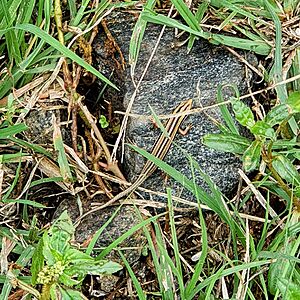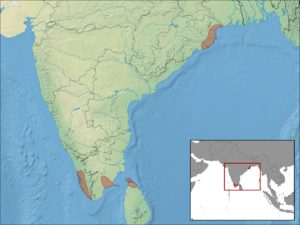Eutropis bibronii facts for kids
Quick facts for kids Eutropis bibronii |
|
|---|---|
 |
|
| Conservation status | |
| Scientific classification | |
 |
|
| Synonyms | |
|
The Eutropis bibronii, often called Bibron's mabuya or Bibron's skink, is a type of lizard. It's also known as the seashore skink. This interesting creature belongs to the Scincidae family, which includes many different kinds of skinks. You can find this species living in India and Sri Lanka.
Contents
What is a Bibron's Skink?
Naming the Skink
The specific name, bibronii, was given to honor a French scientist named Gabriel Bibron. He was a herpetologist, which means he studied reptiles and amphibians. He lived from 1806 to 1848.
What Does it Look Like?
Bibron's skink has a head that is a bit flat. Its lower eyelid has a clear part, like a tiny window. The scales on its back and sides are sharp. There are usually 5 to 7 sharp scales in a row. Around the middle of its body, it has about 28 to 30 rows of scales.
Under its fourth toe, you can find 14 to 20 special scales called lamellae. The skink's back is olive brown. It has a light stripe down its spine, which has dark edges. A dark stripe also runs from its eye all the way to the start of its tail.
Where Does Bibron's Skink Live?
Its Habitat and Lifestyle
Bibron's skink is a fossorial animal. This means it likes to dig and live underground or in burrows. It has been seen burrowing in low plants on sand dunes. This skink usually lives in coastal areas, which are lowlands less than 20 meters (about 65 feet) above sea level.
There are some reports of it living further inland. Some unconfirmed sightings suggest it might live as high as 490 meters (about 1,600 feet) above sea level. However, it mostly prefers sandy coastal spots.
Reproduction
Scientists are still learning about how Bibron's skink reproduces. The exact way it has babies is not yet known.


